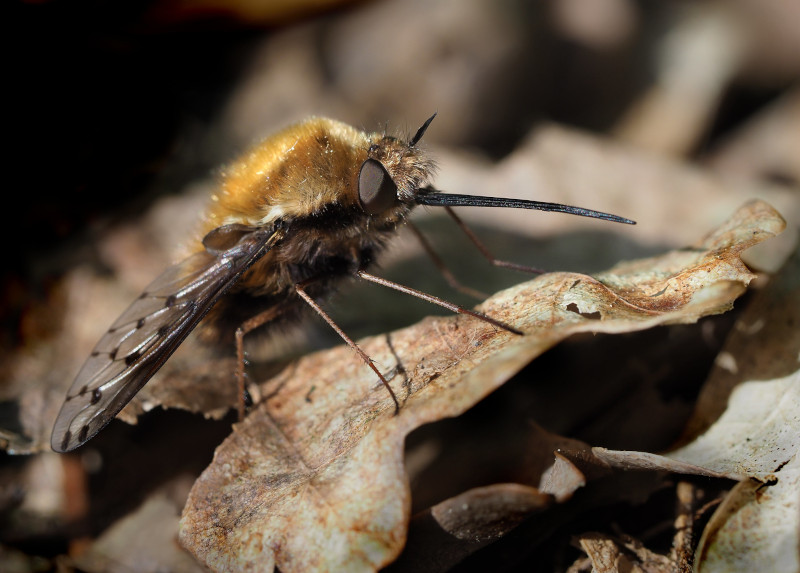
Bee Fly serves as the collective term for a unique family of insects. The name derives from their resemblance to various bees.
Currently, we know of more than 4,500 types of Bee Fly. Additionally, entomologists suspect that thousands of related species remain unidentified. However, scientists actually know very little about most of these species.
Their resemblance to bees represents an evolutionary tactic known as Batesian mimicry. This serves a very specific purpose. Most likely it offers a measure of protection from certain types of predators.
This family of insects also offers more than just a pretty face. Along with the bees they imitate, they serve as important pollinators. In fact, in some parts of the world, they pollinate more plants than bees do.
Bee Fly Physical Characteristics
The various known varieties of Bee Fly vary greatly in size. The smallest attains a length of only 0.08 in (2 mm), while the largest may be as much as 1 in (2.5 cm) long. Their body shape is typically stocky.
Coloring varies by species, but various shades of black, brown, gray, white, and yellow are the most predominant. The bodies are generally covered with fine hairs, giving them a furry appearance. The wings are short but powerful.
Each type displays a prominent proboscis, which it utilizes to feed. This is typically kept rolled up when not in use. However, when fully extended, the proboscis of some species of Bee Fly may be longer than the body itself.
Bee Fly Distribution, Habitat, and Ecology
The various species of Bee Fly inhabit all known temperate and tropical regions of the world. Yet many types are most common in North America, Europe, and Asia. They are most prevalent in areas that are sunny and dry, with a slightly rocky or sandy terrain.
The larvae are parasitical in nature, feeding on the larvae and eggs of other insects. The adults feed on the pollen and nectar of local plants. Their powerful wings allow them to hover over the plant while feeding, just like a hummingbird.
Reliable data on the status of individual species is impossible to attain. Nonetheless, many varieties of Bee Fly are now threatened by climate change.
Check out our articles on Sweat Bee, Twisted Wing Parasite, Crane Fly, Perdita Minima
